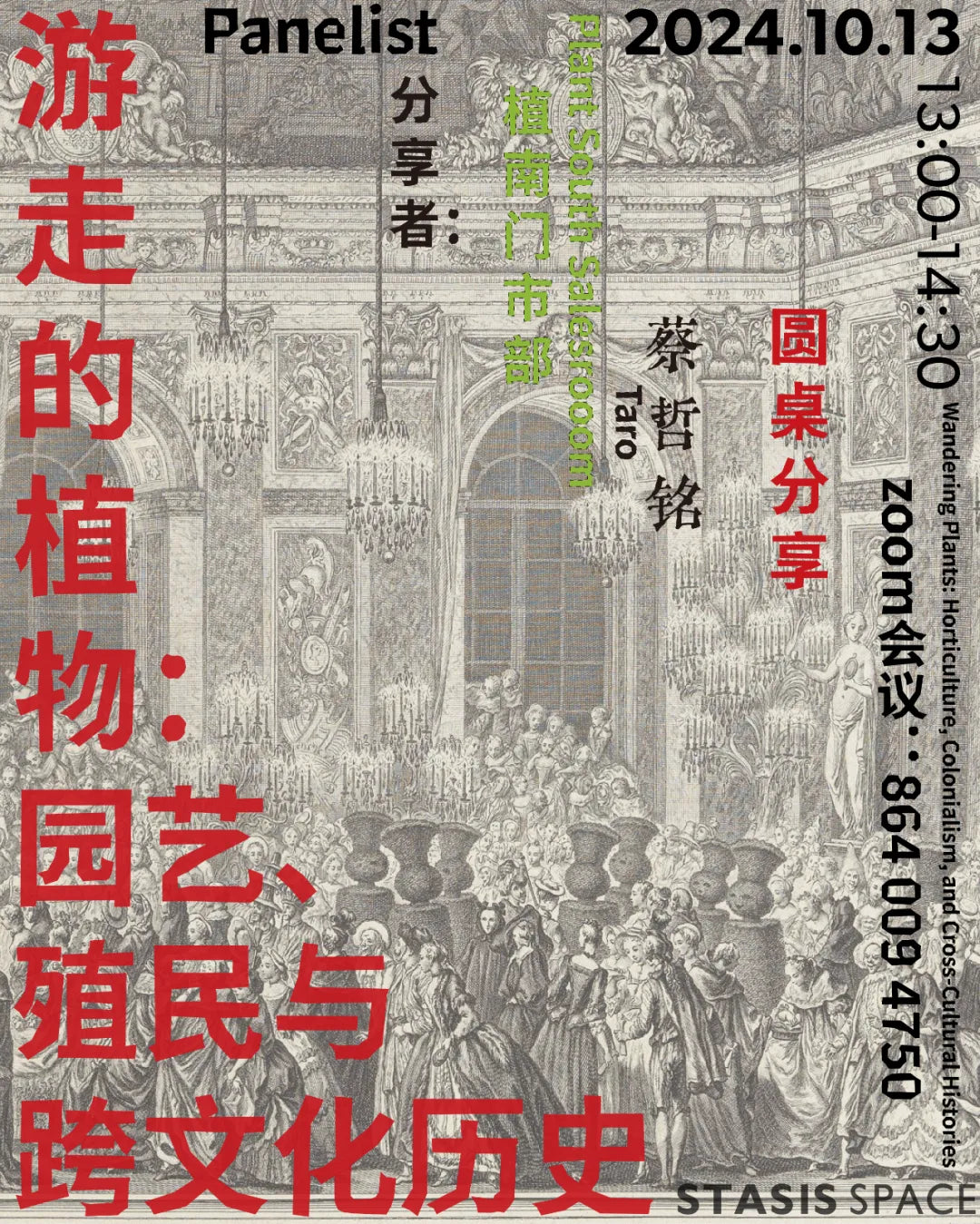
Wandering Plants: Horticulture, Colonialism, and Cross-Cultural Histories
🚩The panel discussion took Rubén Montesinos’ visual research project A Guide on Gardening as a starting point to delve into the fluidity of horticulture and plants, and their entangled relationship with colonial history. By exploring identifiable patterns and repetitions in terms of characteristics, forms, sizes, and species, Rubén’s project reflects the ever-changing nature of topiaries and their impact on urban landscapes, ultimately revealing the dynamism of horticulture in the cityscape and its role as a tool for socio-cultural expression.
Rubén’s research provides us with a unique perspective on the interactions between plants and society. The discussion went further by focusing on the complex global context of plant mobility and colonial expansion. First, we discussed horticultural practices in Mexico City and how they reflect connections with colonial history. Then, the panelists explored the economic and cultural roles of plants in colonial processes through the global migration of crops like pineapples. The reflection of plants and colonialism in art is a significant part of the discussion, especially through exhibitions by artists such as Minerva Cuevas and Ryan Villamael, which highlight the symbolic meanings of plants in artistic expression.
The panel also explored how plant environments, horticultural techniques, and soil conditions change across different cultural contexts, particularly in the Americas, Southeast Asia, and China. A key focus is on how plants and cultures interact, especially within the plantation economy of Southeast Asia, where Chinese communities formed unique social structures through pineapple plantations。
At last, panelists examined two exhibitions as examples, returning to the productive landscapes in the Chinese context, and drawing on Gilles Clément’s The Garden in Motion to further explore the temporality and mobility of plants.
This panel discussion aims to offer a multidimensional, cross-cultural historical perspective to deeply investigate the fluidity of plants and horticulture, as well as the profound impacts they have had across different societies and historical backgrounds.

🚩Panelist 🚩
Taro 蔡哲铭
Cai Zheming is a PhD candidate in Landscape Architecture at the University of Toronto, Canada, and a column editor for the journal Landscape Architecture Frontiers (LAF).He is currently studying at the University of Toronto's architecture, landscape, and design department, with a research focus on historical theory, primarily concentrating on the history of knowledge, landscape infrastructure, cultural landscapes, and critical heritage studies. Cai previously studied at Purdue University and Harvard University in the United States, where he earned his Bachelor's and Master's degrees in Landscape Architecture. He has received the ASLA Student Honor Award in General Design (2013) and the Award of Excellence (2015). Before his PhD studies, he worked at OLIN, where he served as a designer and project manager, mainly participating in projects related to cultural institution landscapes and historic landscapes.
加拿大多伦多大学景观博士候选人、《景观设计学》期刊栏目主持人。现就读于加拿大多伦多大学建筑、景观、设计系,研究方向为历史理论,主要专注于知识史、景观基础设施、文化景观以及批判性遗产研究。他曾分别在美国普渡大学和哈佛大学就读,获得了景观设计学士和硕士学位,并曾荣获ASLA学生通用设计荣誉奖(2013)和杰出奖(2015);此前曾任职于OLIN事务所,担任设计师和项目负责人,主要参与文化机构景观和历史景观项目。
Plant South Salesroom 植南门市部
Plant South Salesroom was established in 2021 as a plant culture research and local creative action group. Through research on plant culture and creative activity planning, they aim to reconstruct contemporary (urban) daily life from the perspective of plants by utilizing cross-scale and multimedia approaches in knowledge experiences. They seek to reshape the connections between commerce, culture, and nature.
「植南门市部」是于2021年建立的植物文化研究与在地创意行动团队。希望通过植物文化内容研究和植物创意活动策划,借由跨尺度和多媒介手段的知识体验,以植物的视角重构当代(城市)日常生活,重塑商业、文化与自然之间的联系。